From the etymological perspective, the term Aztec is derived from Aztlan (or ‘Place of Whiteness’ in connotative meaning), the mythological place of origin for the Nahuatl-speaking culture. Now in spite of their fascinating achievements in the avenues of rich culture and sophisticated agricultural practices, our popular notions tend to gravitate towards the Aztec grisly practices entailing human sacrifice.
While the latter was indeed a part of the Aztec domain, there was more to these people than their ritualistic penchant for blood suggests. To that end, let us have a look at the origins and history of the Aztec warrior culture that paved the way for one of the greatest empires in the Western Hemisphere.
Contents
- The Ascendancy of the Mexica
- The ‘Ten Eagle’ Cuauhtli
- The Rigorous Road to Becoming an Aztec Warrior
- The Telpochcalli – House of the Youth
- The Ritual Training of the Aztec Warriors
- The Xochiyaoyotl or ‘Flower Wars’
- The Atlatl and Macuahuitl
- The Rank-Based Distinction of Armor
- The Eagle and Jaguar Warriors of the Aztec Military
- The Cuachicqueh or ‘Shorn Ones’
- The Advanced Systems of Military Structure and Communication
- The ‘Economy’ of Conquest
- Honorable Mention – Ullamaliztli or the Aztec Ball Game
The Ascendancy of the Mexica
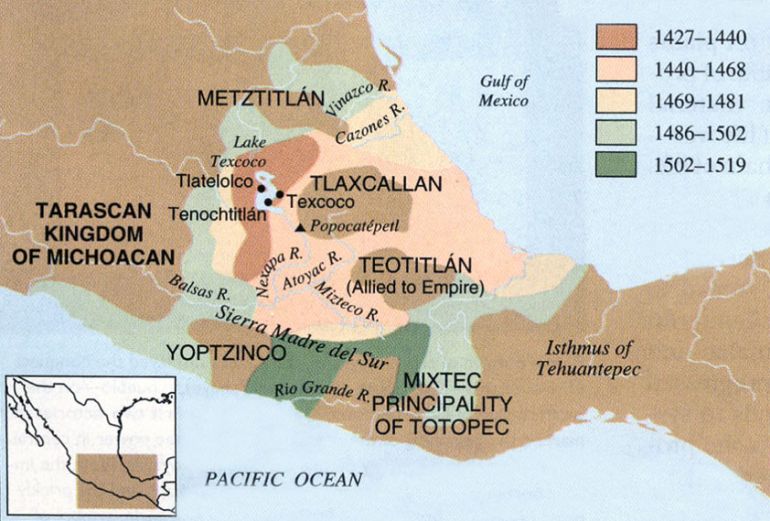
The very term ‘Aztec’ doesn’t pertain to a singular group (or tribe) of people that dominated Mexico in the 15th century. In fact, the legacy of the Aztecs directly relates to that of the Mexica culture, one of the nomadic Chichimec people that entered the Valley of Mexico circa 1200 AD. The Mexica were both farmers and hunter-gatherers, but they were mostly known by their contemporaries to be fierce warriors. And these warrior societies were certainly tested – by remnants of the Toltec Empire.
In fact, according to one version of the Mexica legacy, it was the Toltec warlords who pursued the Mexica and forced them to retreat to an island. And it was on this island that they witnessed the prophecy of “an eagle with a snake in its beak, perched on a prickly pear cactus” – which led to the founding of the massive city of Tenochtitlan by ‘refugees’, circa 1325 AD.
Suffice it to say, in these initial years when Tenochtitlan was still considered a backwater settlement, the Mexica were not counted among the political elite of the region. As such many of them peddled their status as fearsome warriors and inducted themselves as elite mercenaries of the numerous rival Toltec factions.
However, as historian John Pohl mentioned (in his book Aztec Warrior AD 1325-1521), it was this continued association of the Mexica to military matters that ultimately provided them with the leverage to influence political decisions and even attract royal marriages. This shift in the balance of power (in their favor) fueled the Mexica to a dominant position in the region.
And together banding with their culturally-aligned, Nahuatl-speaking brethren from the allied cities of Texcoco and Tlacopan, the Mexica nobles and princes formed what is known as the Aztec Triple Alliance or the Aztec Empire. This super-entity ruled the area in and around the Valley of Central Mexico from the 15th century till the arrival of the Spanish conquistadors.
The ‘Ten Eagle’ Cuauhtli
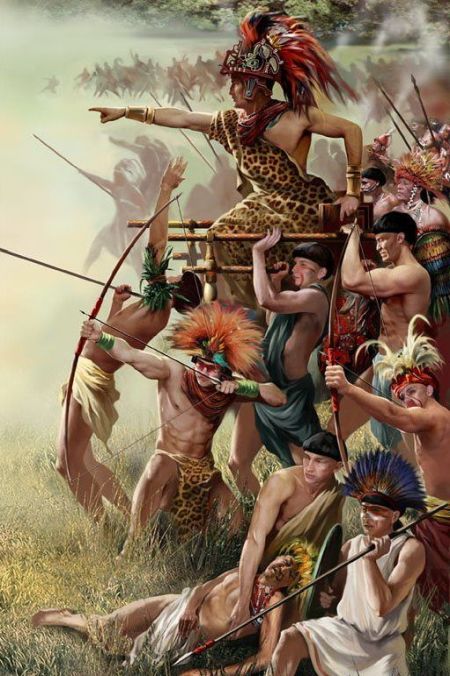
As we can gather from the earlier entry, the Aztecs (pertaining to an alliance of Nahuatl-speaking people) were first and foremost one of the famed warrior societies of Mesoamerica. To that end, it doesn’t come as a surprise that most adult males had to provide some form of mandatory military service in the Aztec army.
In fact, the boys born under the day sign of Matlactli Cuauhtli (or ‘Ten Eagle’) were compulsorily assigned (by revered soothsayers) as future warriors of the Aztec military state, irrespective of their statuses as commoners or nobles.
Relating to the last part of the statement, while the nobles and high-ranking members of the Aztec society played their crucial roles in both the political and military affairs, the Aztec military structure (at least during the first half of the 15th century) theoretically adhered to the ideals of meritocracy.
Simply put, a commoner could also rise up to the rank of an Aztec warrior, on the condition that he proved his ferocity and valor in battle by not only killing but also capturing a certain number of enemies. On occasion, even honorary (but non-hereditary) noble titles were bestowed upon some of these battle-hardened ‘commoner’ warriors, like Cuauhpipiltin (Eagle Nobles) – and they formed the elite fighting force of the Aztec state.
The Rigorous Road to Becoming an Aztec Warrior
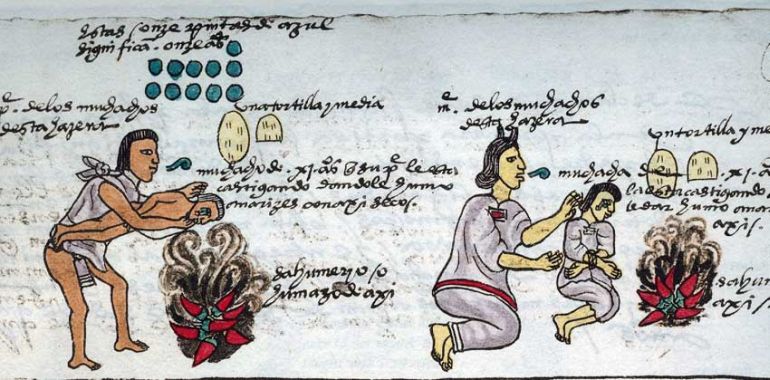
Much like the ancient Spartans, the Aztecs perceived warfare as one of the ‘pillars’ of their thriving society. And for those chosen as future state warriors, their ‘training’ started as early as five years of age. One of the small boy’s first tasks was the intensive physical labor of carrying heavy goods and crucial food supplies from the central marketplace.
And for that, he was only provided with a frugal meal of half a maize cake at the age of three, a full maize cake at the age of five, and one-and-a-half maize cake at the age of twelve. These paltry portions encouraged the would-be Aztec warrior to subsist on meager food items. Such ‘spartan’ nutrition patterns were only supplemented by ritual feasts conducted on particular days of the month.
By the age of seven, the Aztec boy had to learn to maneuver his family boat and fish on Lake Texcoco. And as expected, idleness was not only frowned upon but actively punished by elders. These punishments ranged from beatings to stinging with agave thorns to even having their faces and eyes ‘incensed’ with the pernicious smoke from roasted chili peppers.
The Telpochcalli – House of the Youth
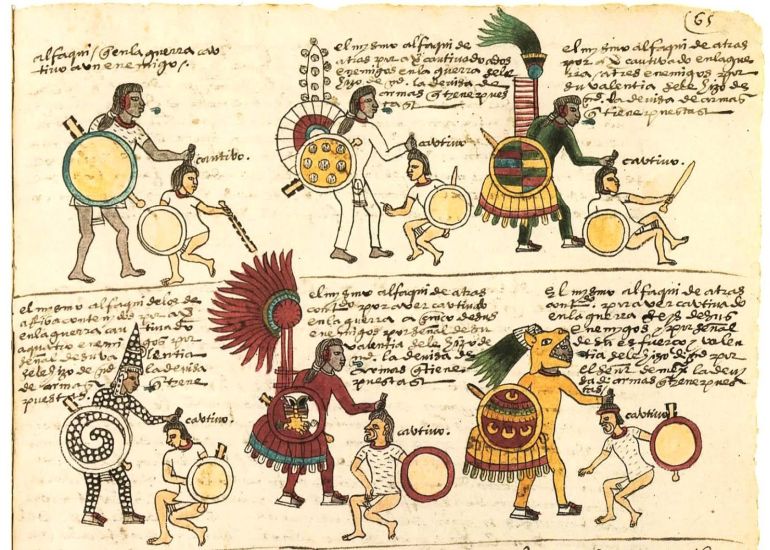
Now we did mention that the Aztec military during the first half of the 15th century theoretically adhered to a merit-based system. However, as referenced in the Aztec Warrior AD 1325-1521 (by John Pohl), on the practical side of affairs, the military campaigns were mostly headed by the noble houses, who formed their own religiopolitical institutions.
This scope was reflected by the Calmecac (or ‘House of the Lineage’), a separate school for (mostly) nobles, where the candidates were trained for both priesthood and warfare. The Telpochcalli (or ‘House of Youth’), on the hand, was founded for the commoners (mostly). Here they were to be trained as warriors after they crossed the threshold of 15 years, thus being somewhat akin to the ancient Spartan concept of the Agoge.
Many of these schools were run by veteran warriors who were barely older than the pupils themselves, thus alluding to the demand and progression of military duties in Aztec society. In any case, one of the first tasks assigned to the teenage trainees focused on teamwork, and as such entailed investing their time in repairing and cleaning public works like canals and aqueducts.
This notion of societal interdependence was imparted from a very early age in most Aztec boys – which in many ways rather reinforced their sense of fraternity during actual military campaigns. The menial tasks were accompanied by group-based drills that tested their physical fortitude, with the ‘masters’ often resorting to intimidation and downright abuse to bring the best out of their pupils.
Contrary to popular ideas, discipline was one of the mainstays of the Aztec military training – so much so that drunkenness during training could even result in the death penalty (on rare occasions). And once again drawing its comparison with the Spartan Agoge, the Telpochcalli youths were also encouraged to take up singing and dancing as leisurely activities during evenings. The former was ‘designed’ to convey spiritual nurturing through the various vibrant Aztec god myths and the latter was to enhance their agility in the long run.
The Ritual Training of the Aztec Warriors
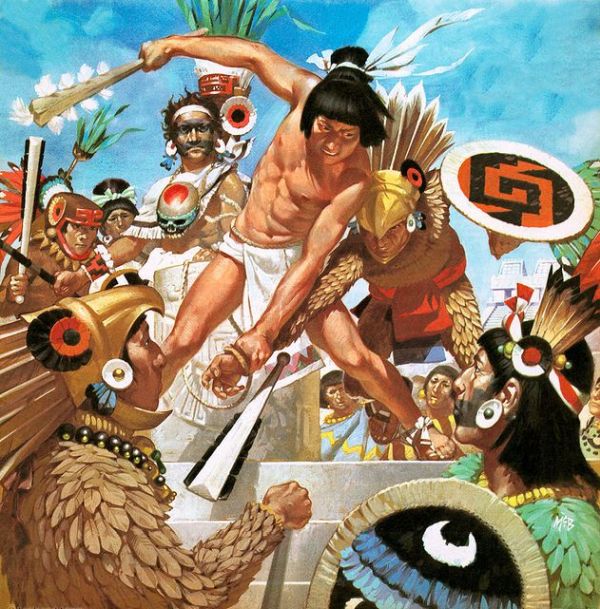
The youths were however introduced to real combat scenarios only during the major religious festivals that were mostly held in the central district of Tenochtitlan. One of these series of ceremonies, held between February and April, was dedicated to the Aztec storm god Tlaloc and the war god Xipe. These festivities inexorably brought forth their versions of vicious ritual combats.
Some of the scenarios sort of bridged the gap between bloody gladiatorial contests and melee fighting exhibitions, with high-ranking prisoners-of-war and captives being forced to defend themselves from heavily armed Aztec opponents – which often resulted in fatalities.
At the same time, the veteran masters from both the Calmecac and Telpochcalli schools were asked to train their pupils in the art of handling various weapons, starting from slings, and bows to spears and clubs. These students were then encouraged to take part in mock battles against each other as teams, with reward systems of food and gifts.
These staged combat scenarios were perceived as rites of initiation for the young warriors. As such the victors were often inducted into advanced training programs that focused on the handling of heavier melee weapons reserved for the elite fighters of the Aztec army.
The Xochiyaoyotl or ‘Flower Wars’
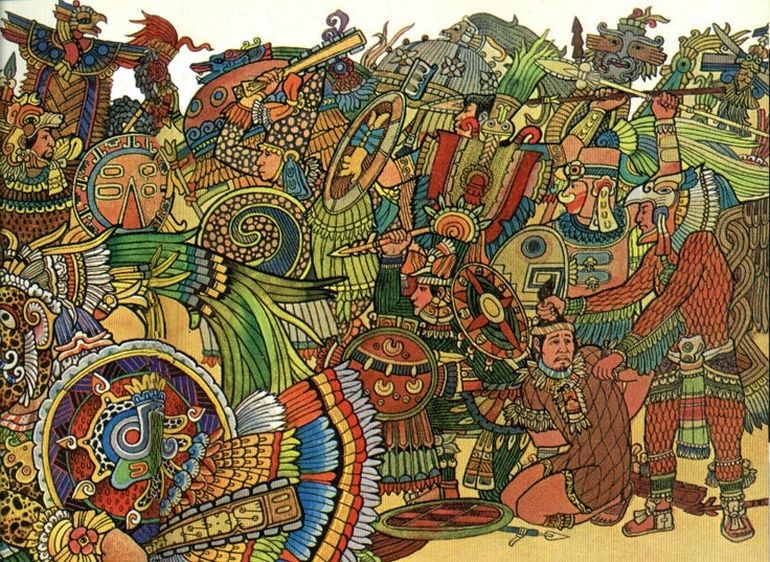
The scope of ritual combat in the Aztec military was not just limited to the ceremonial confines of city-temple precincts, but rather extended to actual battlefields. The Xochiyaoyotl (Flower Wars or Flowery Wars) mirrored this relentless violence where religious inclinations fueled the ‘need’ for warfare.
Possibly a practice started by Tlacaelel, a high-ranking prince who was one of the chief architects of the aforementioned Aztec Triple Alliance (or Aztec Empire), the core doctrine of the Flower Wars called for blood – as ‘nourishment’ for Huitzilopochtli, the Mesoamerican deity of war and sun.
In fact, by the early 15th century, Tlacaelel elevated Huitzilopochtli as the patron god of the very city of Tenochtitlan, thus intrinsically tying up the ‘hunger’ of gods with the Aztec penchant for ritual war.
Interestingly enough, many of these Flower Wars (participated by the young Calmecac and Telpochcalli warriors) were conducted against the Tlaxcalans, who themselves constituted powerful people with a Nahua cultural affinity shared with the Aztecs.
On occasions, the Aztecs reached a status-quo agreement with the mighty Tlaxcalans which outlined that the Xochiyaoyotl would be conducted in a bid to capture sacrificial prisoners, as opposed to conquering lands and taking away resources.
On the other hand, the status (and rank) of an Aztec warrior often depended on the number of capable enemies he had captured in battle. In essence, the Flowers Wars, while maintaining their seemingly vicious religious veneer, pushed the Aztec military into a nigh perpetual state of warfare. Such ruthless actions, in turn, produced the most fierce, battle-ready warriors who were required by the Aztec Empire to conquer and intimidate the other Mesoamerican city-states in the region.
The Atlatl and Macuahuitl
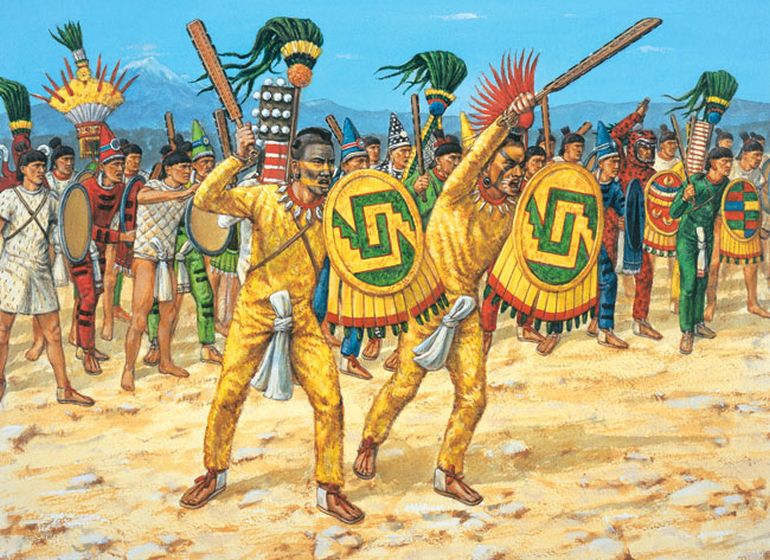
As we fleetingly mentioned before, the Aztec warriors used a range of weapons in combat scenarios, from slings, and bows to spears and clubs. But the signature Mesoamerican weapon preferred by some Aztec warriors pertained to the atlatl or spear-thrower.
Possibly having its origins in the coastal hunting weapons furnished by their predecessors, the atlatl was commonly used by various Mesoamerican cultures like Mixtecs, Zapotecs, and Maya. According to expert Thomas J. Elpel –
The atlatl throwing board consists of a stick about two feet long, with a handgrip at one end and a “spur” at the other end. The spur is a point that fits into a cavity at the back of a four to six-foot-long dart (spear). The dart is suspended parallel to the board, held by the tips of the fingers at the handgrip. It is then launched through a sweeping arm and wrist motion, similar to a tennis serve. A fine-tuned atlatl can be used to throw a dart 120 to 150 yards, with accuracy at 30 to 40 yards.
Suffice it to say, the atlatl as a precise weapon was pretty difficult to master, and as such was possibly used by a few elite Aztec warriors. The macuahuitl (roughly translating to ‘hungry-wood’), on the other hand, was a more direct and ‘brutal’ melee weapon, comprising a saw-sword (differing in sizes from one-handed to two-handed). It was usually carved of hardwood and then embedded with obsidian razor blades (secured by bitumen adhesives).
On the battlefield, the macuahuitl was also accompanied by a longer halberd-like weapon known as the tepoztopilli, and it was probably used by less-experienced warriors whose job was to fend off enemy charges from the rear ranks.
The Rank-Based Distinction of Armor
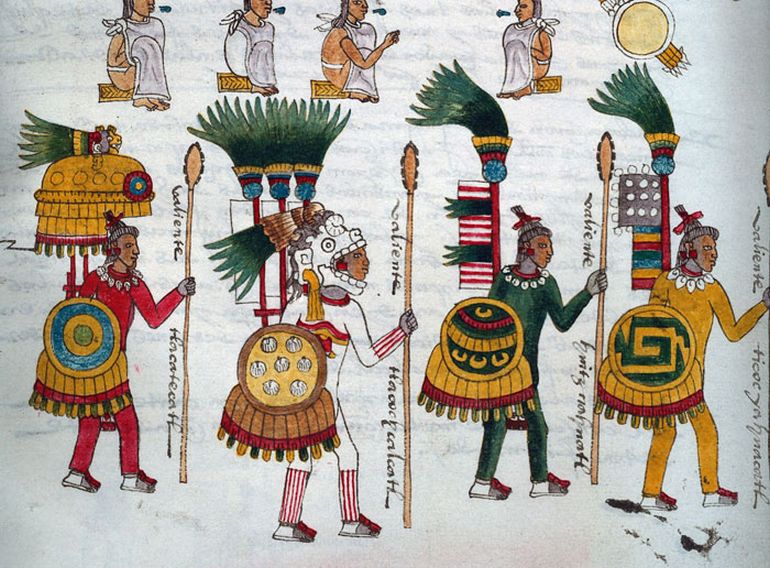
The aforementioned heavy weapons, like obsidian blades, were complemented with defensive (76 cm diameter) shields known as chimalli, made of fire-hardened cane reinforced with heavy cotton or even solid wood sheathed in copper.
These relatively large shields were bedecked with intricate featherworks, hanging cloth, leather pieces (that doubled as light defenses for the legs), and heraldic insignias. To that end, the image of a ferocious Aztec melee fighter with his gruesome macuahuitl and sturdy decorated chimalli is indeed an intimidating one.
But, as John Pohl mentioned, the scope was made even more terrifying with the adoption of specialized armor with their variant motifs – all based on the hardy quilted cotton set known as ichcahuipilli. As we mentioned before, the status (and rank) of an Aztec warrior often depended on the number of capable enemies he had captured in battle. And this achieved rank was signified by the uniform-style armor he wore on the battlefield.
For example, a Telpochcalli-trained Aztec warrior who had captured two captive warriors was entitled to wear the cuextecatl, which comprised a conical hat and a tight bodysuit decorated with multi-colored feathers like red, blue, and green.
A warrior who succeeded in capturing three of his foes was gifted with a rather long ichcahuipilli with a butterfly-shaped back ornament. The Aztec warrior who captured four men was given the famed jaguar suit and helmet, thus making him a Jaguar Warrior. And the warrior who captured more than five captive foes was awarded the tlahuiztli (or green feather) along with xopilli ‘claw’ back ornament.
It should be noted that the Calmecac priests, many of whom were accomplished noble warriors in themselves, were also presented with their rank-signifying armor sets. For example, the greatest of these warrior priests, who were relentless (and lucky) enough to capture six or more enemies, were specially awarded coyote uniforms with red or yellow feathers and wooden helmets.
The Eagle and Jaguar Warriors of the Aztec Military
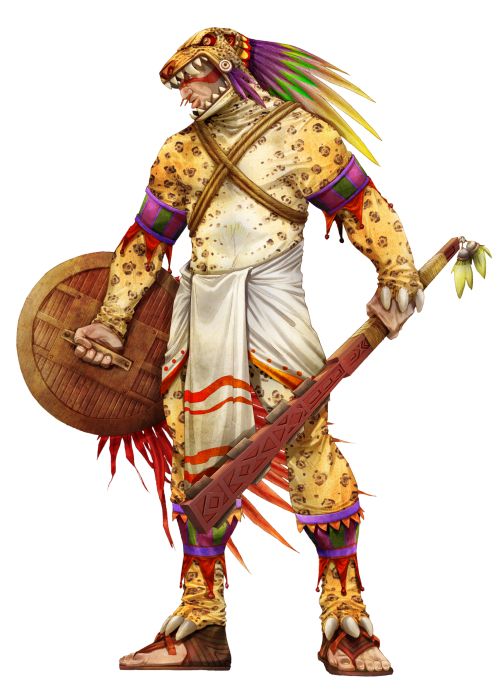
Units made famous by the real-time strategy game Age of Empires 2, the eagle warriors (cuāuhtli) and jaguar warriors (ocēlōtl) possibly comprised the largest elite warrior band in the Aztec military, and as such when fielded together, were known as the cuauhtlocelotl. Pertaining to the former, eagles were revered in Aztec cultures as the symbol of the sun – thus making the eagle warriors the “warriors of the sun”.
Suffice it to say, these Aztec fighters draped themselves in eagle feathers and eagle-inspired headgears (often made of sturdy wooden helms). And typically, the eagle warrior, with obvious ‘commoner’ exceptions, was recruited from the nobility.
The Aztec jaguar warrior, on the other hand, covered himself in pelts of jaguars (and pumas), a practice that not only enhanced his elevated visual impact but also pertained to a ritualistic angle wherein the Aztec warrior believed that he partly imbibed the strength of the predator animal.
It can be hypothesized that these elite warriors wore quilted cotton armor (ichcahuipilli) under their animal pelts while higher-ranking members tended to flaunt their additional apparel in the form of colored feathers and plumes.
Now going by the aforementioned parameter of ranks in the Aztec military, a fighter had to at least capture more than four enemies (some sources mention the figure as 12, while others mention the figure of 20) to be inducted into the order of the cuauhtlocelotl (or the rank of eagle).
In any case, often placed at the fore of the Aztec war band, members of the cuauhtlocelotl were expected to be granted lands and titles by their lords – irrespective of their noble or commoner status, thus in many ways mirroring the early knightly class of medieval Europe. To that end, many modern studies tend to even refer to them as eagle and jaguar knights.
The Cuachicqueh or ‘Shorn Ones’
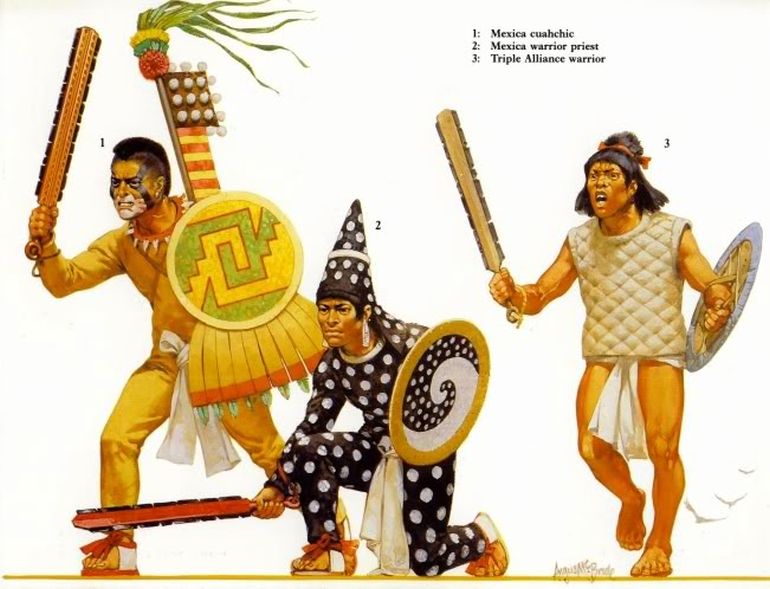
Interestingly enough, beyond the order of the cuauhtlocelotl, the Aztecs possibly fielded a separate division of their most elite warriors, who were known as the cuachicqueh (or ‘shorn ones’). Though not much is known about this unique band of Aztec fighters, some sources mention them as being akin to the ‘berserkers’ – and thus their ranks only included esteemed warriors who had dedicated their lives to the pursuit of warfare, instead of titles and land grants.
Simply put, the cuachicqueh possibly comprised full-time soldiers who had proved their flair in battles with courage, ferocity, and downright fanaticism.
As for the moniker of ‘shorn ones’, the elite Aztec warrior probably shaved his entire head with the exception of a long braid over the left ear. One half of this bald patch was painted blue, while the other half was painted red or yellow. Now according to a few sources, the cuachicqueh had to take a remorseless oath of not moving backward (in retreat) during battles, on the pain of death from their fellow soldiers.
And as was the system followed by the Aztec military, the tlacochcalcatl (roughly a rank equivalent of the ‘chief of armory’), usually the second or third most powerful man in the Aztec hierarchy, was an honorary member of the cuachicqueh. Other officers beneath him were known to flaunt their ritzy attires in the form of unusually long wood poles (pamitl) with feathers and banners fastened to their backs, much like the famed Winged Hussars of Poland.
The Advanced Systems of Military Structure and Communication
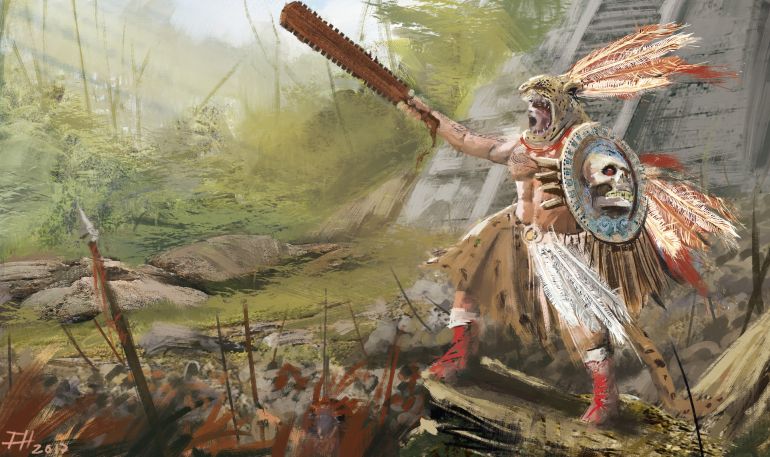
As author John Pohl mentions (in his book Aztec Warrior AD 1325-1521), the Aztecs had the capacity to raise armies that possibly numbered six figures by sheer virtue of their ability to amass both food and resources.
Such impressive logistical feats were achieved with the help of innovative land reclamation techniques, chinampa (shallow lake bed) agricultural advancements, and storage-based infrastructural facilities that acted as strategic supply depots for the marching armies.
In many ways, the large number of troops fielded by the Aztecs provided them with a tactical advantage in campaigns that went beyond obvious numerical superiority. To that end, the Mexica army was often divided into units of 8,000 men known as the xiquipilli.
Each of these xiquipilli units probably acted as self-sufficient ‘mini-armies’ in themselves who were not only trained to take alternate campaign routes to circumvent enemy positions but were also capable of pinning down their foes until the arrival of larger reinforcements.
Pertaining to these battlefield tactics, the Aztec war machine focused on the entrapment of their enemies, as opposed to choosing preferential areas for conducting their military actions. Simply put, the Aztecs favored the use of flexible maneuvers that required a system of signals and communications that could ‘outwit’ their enemies, thus relegating the need for advantageous terrains and positions.
Some of these signals were based on a relay system composed of runners spaced at equal distances from the lines. Other alerting mechanisms were based on smoke and even mirrors (made of polished iron pyrites) that aided in communication over long distances between the xiquipilli units. And once the battle commenced, commanders had to keep an eye on the order of ornamental standards that synchronized with the blaring of conch shells and beats of drums.
The ‘Economy’ of Conquest
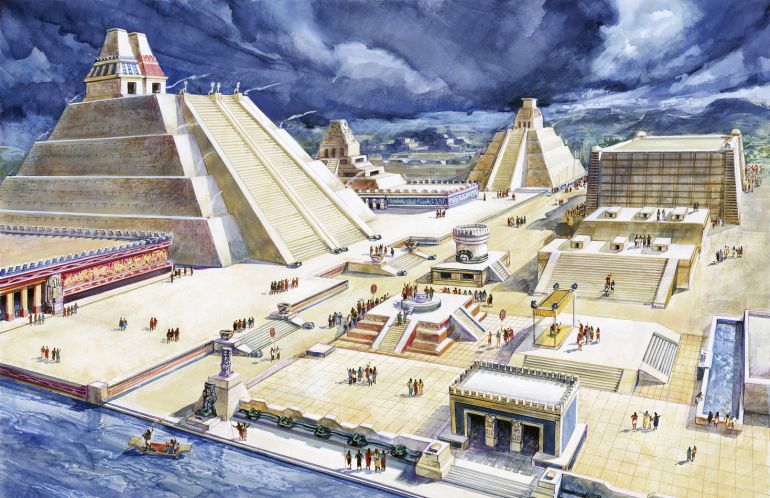
There were quite a few royal strongholds of Mesoamerican cultures centered around the Valley of Mexico. From the 14th century onwards, these strategic settlements also doubled as commercial nerve centers that comprised both trading facilities and craft-producing workshops. Most of the workshops were often contained within the rulers’ palatial complexes and supervised by royal women.
These craft-producing establishments were known to manufacture exotic goods (like intricate featherworks) and luxury items (like exquisite jewelry) that sort of flowed as currency between the princely classes of the various city-states.
To that end, the greater capacity (and ability) to craft such expensive commodities mirrored the higher statuses extended to many of these royal houses. This resulted in a competitive field encompassing a complex nexus of alliances, gift-sharing, trading, rivalries, and even military raids.
The Nahua-speaking Aztecs, on the other hand, sought to supplant this volatile economic system with the aid of their martial acumen. In essence, by conquering and taking over (or at least subduing) many of the royal strongholds, the Aztec nobles forced their own commercial road map on the aforementioned craft-producing workshops.
Consequently, as opposed to competing with the neighboring city-states, these establishments now produced opulent commodities for their Aztec overlords. These goods, in turn, were circulated among the Aztec princes and warriors – as incentives (in the forms of gifts and currencies) to raise their appetite for even more military campaigns and conquests.
So simply put, the conquests of the Aztecs fueled a (noble-dominated) practical cyclic economy of sorts, wherein more territories brought forth the enhanced capacity to produce more luxury items.
Honorable Mention – Ullamaliztli or the Aztec Ball Game
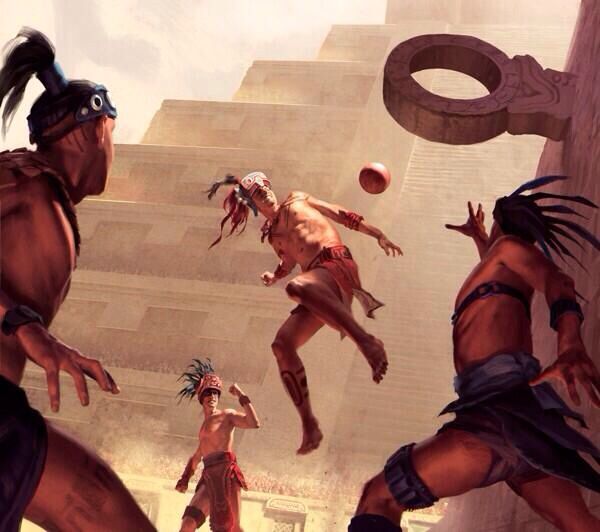
Previously in the article, we mentioned how the Aztec warrior trainees took part in exercises that promoted agility and strength. One of these recreational exercises managed to reach political heights, in the form of the Ullamaliztli.
The game probably had its origins in the far older Olmec civilization (the first major civilization centered in Mexico) and was played in a distinctive I-shaped court known as tlachtli (or tlachco) with a 9-pound rubber ball.
Almost taking a ritualistic route, such courts were usually among the first structures to be established by the Aztecs in the conquered city-states, after they had erected a temple dedicated to Huitzilopochtli. As for the gameplay, the Aztec-History website makes it clear –
The teams would face each other on the court. The object, in the end, was to get the ball through the stone hoop. This was extremely difficult, and so if it actually happened the game would be over. In fact, according to historian Manuel Aguilar-Moreno, some courts didn’t even have rings.
Another important rule was that the ball was never allowed to touch the ground. Players couldn’t hold or even touch the ball with their hands – only the elbows, knees, hips, and heads were used. As you may imagine, this made for a very fast-paced game, and the players had to constantly throw themselves against the surface of the court to keep the ball from landing. The players were skillful, and the ball could stay in the air for an hour or more.
Suffice it to say, like many things ‘Aztec’, the Ullamaliztli was a rigorous game that often resulted in grave injuries, especially when the players, often protected by deerskin gears, had to throw themselves to the ground. In any case, the ball game transcended into a true spectator sport that attracted kings, nobles, and throngs of commoners among audiences, while pitting city-states against each other that usually took a political turn.
In fact, the popularity of Ullamaliztli rose to such dizzying heights that it fueled gambling businesses on the side where one could sell his featherworks, belongings, and even himself (as a slave) to work off the debts.
Note* – The article was updated on 20th June 2022.
Featured Image Credit: Illustration by Kamikazuh, DeviantArt
Book References: Aztec Warrior AD 1325-1521 (By John Pohl) / Empire of the Aztecs (By Barbara A. Somervill)
Online Sources: Britannica / Aztec-History (link here) / Ancient History Encyclopedia
And in case we have not attributed or misattributed any image, artwork, or photograph, we apologize in advance. Please let us know via the ‘Contact Us’ link, provided both above the top bar and at the bottom bar of the page.
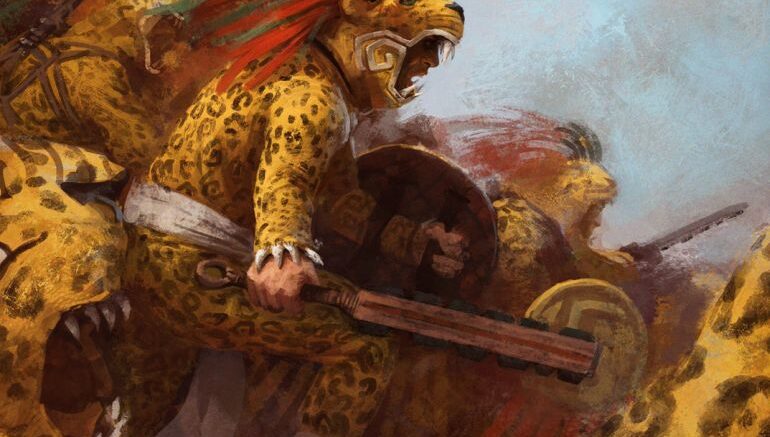



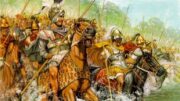
Be the first to comment on "History of the Aztec Warriors: The Grim Fighters of Mexico"